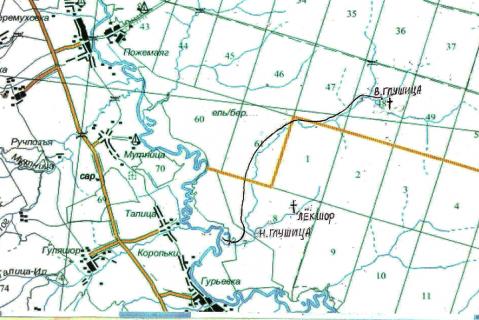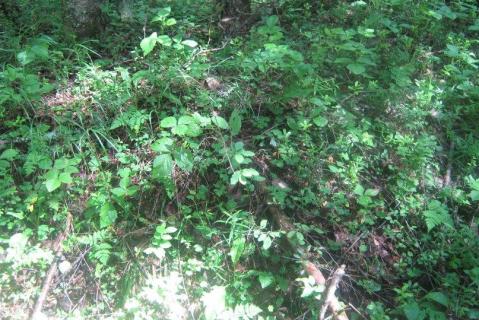In 1940 families of Polish citizens deported from the western regions of Ukraine were resettled in the Nizhnyaya (Lower) Glushitsa and Lyokshor special settlements. The settlements were close together. The deportees worked in the forest and grew potatoes. A graveyard was organised on higher ground, 500 metres from the settlement. The Polish families left in May 1944 after which the Nizhnyaya Glushitsa forestry outpost was closed. An old inhabitant M.A. Rubtsov recalls that about 30 Catholic crosses were still standing in the graveyard in the 1970s.
Today no grave markers survive, and the site is overgrown with trees and grass. The total number buried there has not been established and no lists of names are available. The burials were discovered and investigated in June 2009 by an expedition of pupils from the Mutnitsa and Letskaya schools, led by V.M. Masaltsev.
The Memorial online database (2025) lists 129,473 victims in the Komi Republic. (See Nizhny Chov.)
Among them were over 64,000 deportees sent to or born in the Republic. During collectivisation (1929-35) they numbered 20,366, a quarter of whom were aged 1-10. In 1940 there was a massive influx from occupied Polish territory (19,367). More, mainly Germans (5,970) were sent in the 1940s and 1950s (6,699).
| State of burials | Area | Boundaries |
|---|---|---|
|
12-15 grave mounds visible
|
about 1,500 sq m
|
not delineated
|
[ Original texts & hyperlinks ]
Materials of the school expedition (Letskaya village, Priluzsky district, Komi republic), compiler V.M. Masaltsev – Pokayanie Foundation Archive (Syktyvkar)
“Nizhnyaya Glushitsa and Lyokshor special settlements. Deportees graveyard”, Virtual Museum of the Gulag [retrieved, 27 May 2022; no longer accessible]


